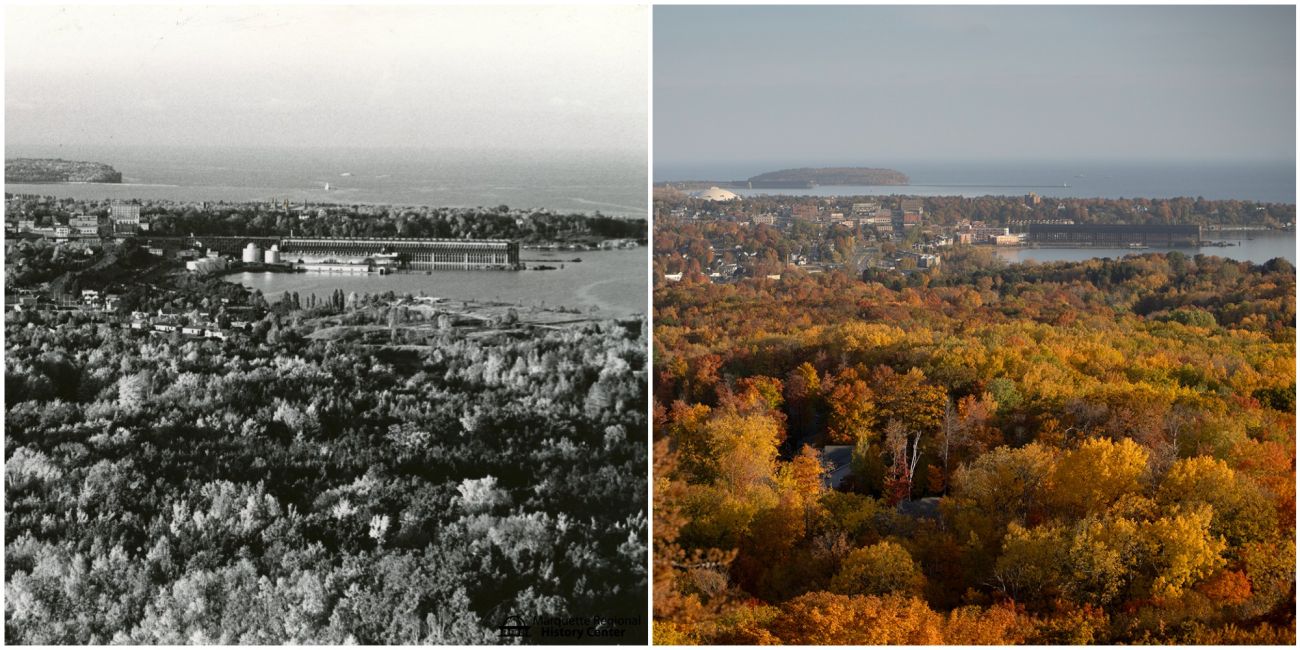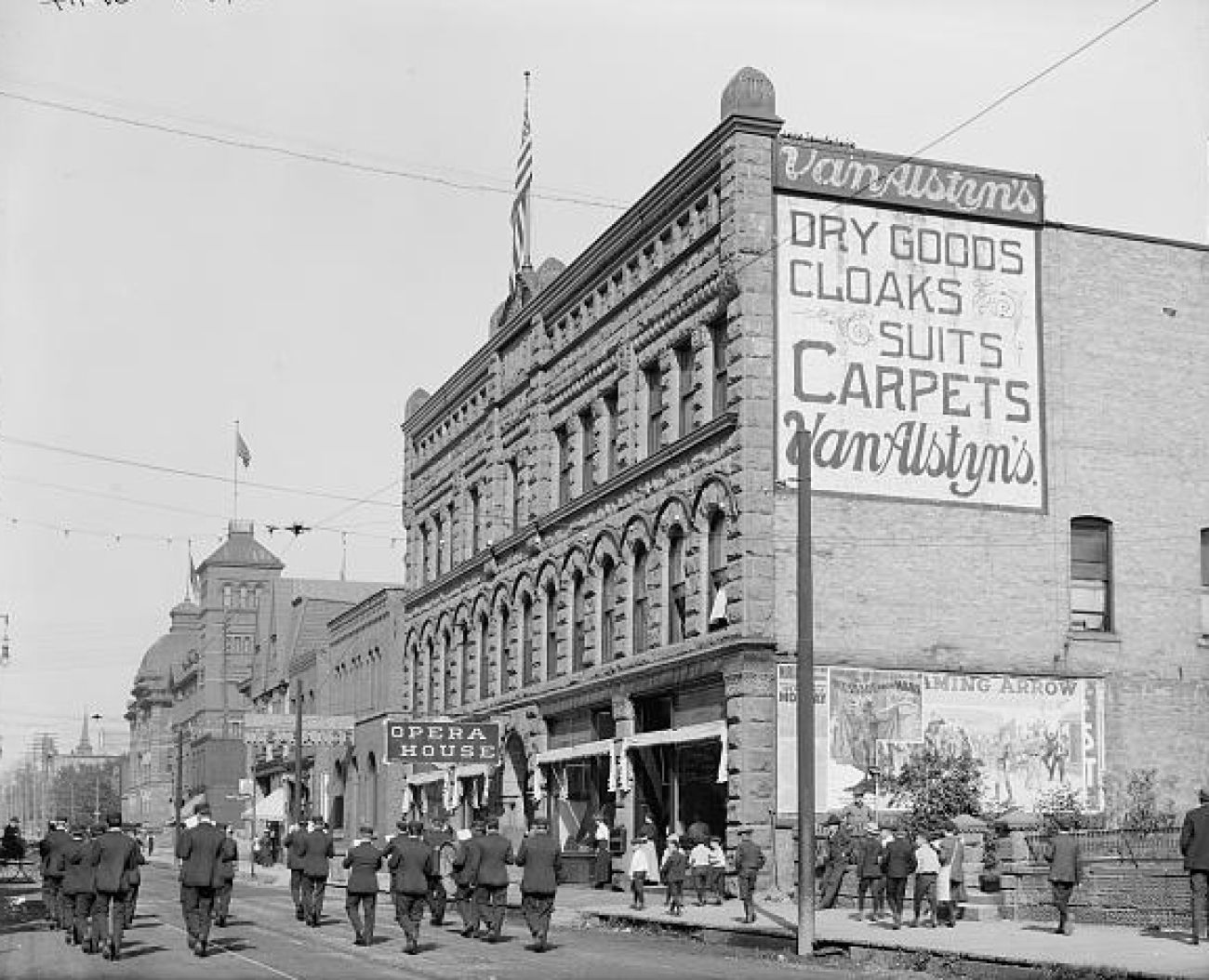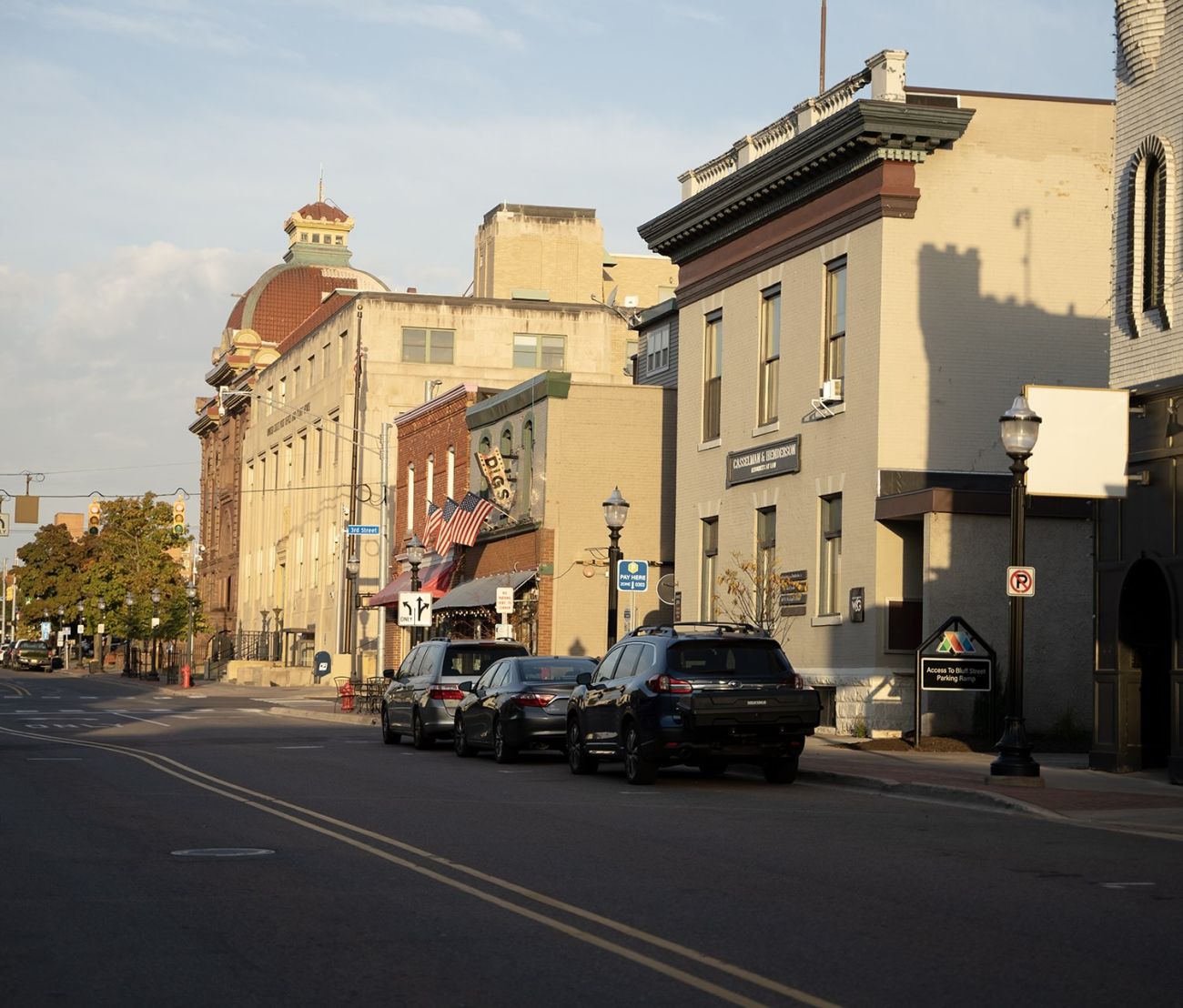See how Marquette has changed in photos. Send Bridge your photos of the city

MARQUETTE — Change is coming fast along the shores of Lake Superior, as newer residents from southern states are relocating to Marquette for its natural beauty and lifestyle.
That has prompted debates about the pace of growth, preserving lakefront access and how best to balance tourism and the year-around economy.
Bridge Michigan used photos to tell the story of the changes, comparing images from the U.S. Library of Congress with contemporary ones.
Related:
- In bustling Marquette, tensions grow amid $1M condos, influx of new residents
- Marquette to tourists: We love you. We need you. But learn some respect
Check out the differences, and help join our photo journey by sending photos of Marquette — from then and now — to Paula Gardner. By emailing photos to Bridge, you are giving us permission to publish them in a future story, newsletter or social media post and asserting that you are the owner.
Now, enjoy the then-and-now glimpses of Marquette.


THEN: Looking north up Front Street in downtown Marquette in 1909. (Courtesy of the Library of Congress) NOW: The street cars are gone, but some of the same buildings still dot one of the main streets in the city along Lake Superior. (Bridge photo by Kathy Kieliszewski)


THEN: The Marquette Harbor Lighthouse pictured here in 1898 was first built in 1866, replacing the original, poorly-built lighthouse constructed 13 years prior. A second story was added to the lighthouse in 1909-1910 and painted red in 1965, becoming the structure we see today. (Courtesy of the Library of Congress) NOW: Some of the same rock formation in the cove just south of the Marquette Harbor Lighthouse can be seen in this present day photo. The Marquette Maritime Museum offers interpretive tours of the grounds and lighthouse. (Bridge photo by Kathy Kieliszewski)


THEN: The Marquette Opera House on West Washington Street, pictured here between 1900-1910, opened in 1892 with the play “Hazel Kirke.” The building later transitioned into a retail and office space and burned down during the snowstorm of 1938 under somewhat suspicious circumstances. (Courtesy of the Library of Congress) NOW: In modern day Marquette, Washington Street is filled with businesses, restaurants and shops catering to tourists, locals and students from Northern Michigan University. (Bridge photo by Kathy Kieliszewski)


THEN: A train along with a number of train cars delivering ore can be seen atop the train trestle leading to the Ore Dock in the Lower Harbor in Marquette. The large steel and concrete structure was built in 1931 and decommissioned in 1971. The connecting trestle was removed in 1978. (Courtesy of the Marquette Regional History Center) NOW: Today, the area around the Ore Dock is more suited to outdoor enthusiasts than iron ore delivery. Bike paths and parks surround the harbor and dock that serves as one of Marquette’s most visible landmarks. (Bridge photo by Kathy Kieliszewski)


THEN: In 1974, residents of East Crescent Street near North Lakeshore Boulevard could catch a view of Lake Superior from their neighborhood. (Courtesy of the Marquette Regional History Center) NOW: Trees have grown up along the Lake Superior shoreline blocking the views for those who live on East Crescent Street today. (Bridge photo by Kathy Kieliszewski)


THEN: St. Peter Cathedral and the connected Bishop Baraga High School sat at West Baraga Avenue and South Fourth Street in Marquette. (Courtesy of the Library of Congress) NOW: The stately Catholic church looks different today because of a fire in the mid-1930s that nearly destroyed the structure. The renovation took several months. Many changes were made including the addition of the large Romanesque columns and elaborate stained glass windows. The school was demolished in the early 1970s and the space across from the church is now the home to Marquette City Hall. (Bridge photo by Kathy Kieliszewski)


A photo from the early 20th century shows the United States Post Office building on West Washington Street and North Third Street in downtown Marquette next to City Hall. The building was completed in 1889 and demolished in 1936, according to postmark.org, a website dedicated to postal history. (Courtesy of the Library of Congress) NOW: The current U.S. Post Office and courthouse building was built in 1937. The old City Hall was sold to a developer in 1975 after a new municipal building was built on West Baraga Avenue. The historic building on West Washington is now office space. (Bridge photo by Kathy Kieliszewski)
Business Watch
Covering the intersection of business and policy, and informing Michigan employers and workers on the long road back from coronavirus.
- About Business Watch
- Subscribe
- Share tips and questions with Bridge Business Editor Paula Gardner
Thanks to our Business Watch sponsors.
Support Bridge's nonprofit civic journalism. Donate today.
See what new members are saying about why they donated to Bridge Michigan:
- “In order for this information to be accurate and unbiased it must be underwritten by its readers, not by special interests.” - Larry S.
- “Not many other media sources report on the topics Bridge does.” - Susan B.
- “Your journalism is outstanding and rare these days.” - Mark S.
If you want to ensure the future of nonpartisan, nonprofit Michigan journalism, please become a member today. You, too, will be asked why you donated and maybe we'll feature your quote next time!




